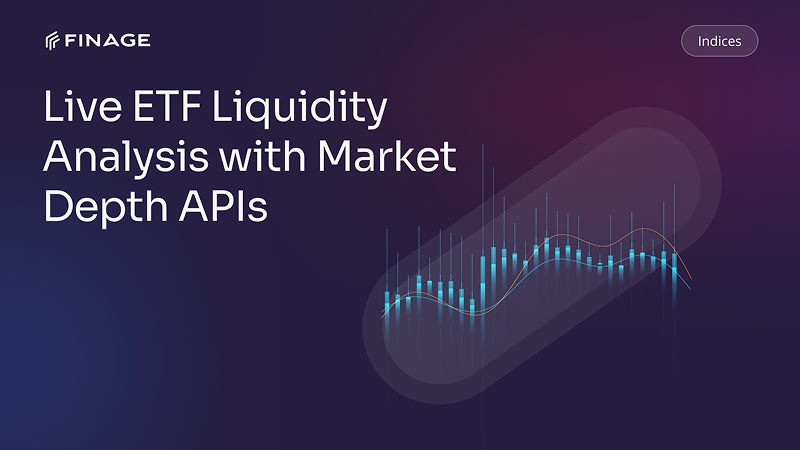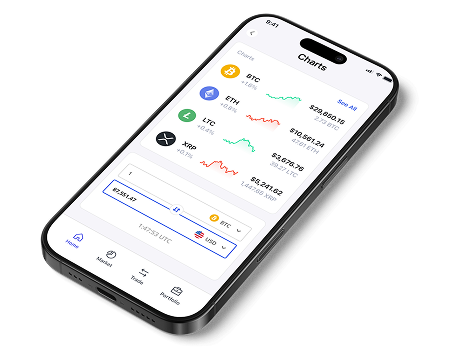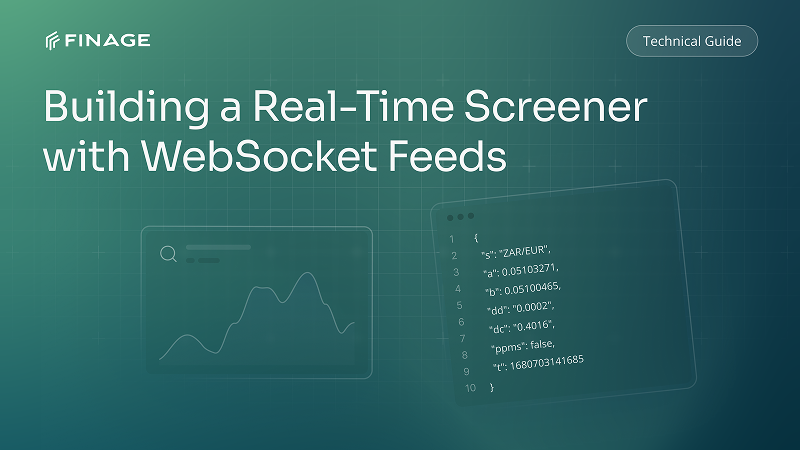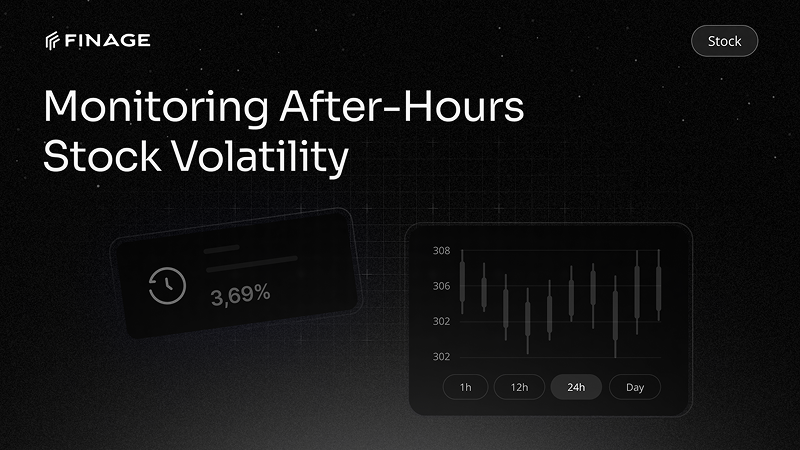Live ETF Liquidity Analysis with Market Depth APIs
7 min read • October 5, 2025

Introduction
Liquidity is one of the most important factors in exchange-traded fund (ETF) trading, and it can often determine whether a strategy succeeds or fails. Traders, developers, and fintech teams increasingly rely on an ETF liquidity API to analyze order books, track market depth, and measure spreads in real time. With accurate liquidity insights, investors can avoid costly slippage, identify optimal entry and exit points, and assess the true tradability of an ETF beyond its headline volume.
Finage provides reliable and developer-friendly APIs that capture live market depth data across ETFs and other asset classes, helping teams turn raw liquidity into actionable insights. This blog explores how liquidity analysis works, why it matters, and how APIs bring efficiency and transparency to ETF trading.
Table of Contents
- Why ETF Liquidity Matters More Than Volume
- Understanding Market Depth in ETF Trading
- Common Challenges in Measuring ETF Liquidity
- How an ETF Liquidity API Enhances Trading Strategies
- Real-Time vs. Historical Liquidity Insights
- How Finage Powers ETF Liquidity Analysis
- Final Thoughts
1. Why ETF Liquidity Matters More Than Volume
When traders evaluate ETFs, many look at daily trading volume as a measure of activity. While volume offers some perspective, it doesn’t always tell the full story. Liquidity, the ability to buy or sell without moving the price significantly, is what truly determines how efficiently an ETF can be traded. This is where an ETF liquidity API provides deeper insights.
The Limitations of Volume
A fund might report high average daily volume, but that doesn’t guarantee tight bid-ask spreads or deep market orders. Without liquidity, even a “popular” ETF can generate slippage.
Real Cost of Execution
Liquidity directly impacts execution costs. Thin liquidity means wider spreads, which raise the hidden costs of trading.
Transparency Beyond AUM
Large assets under management (AUM) don’t always translate to easy tradability. Liquidity analysis ensures traders avoid ETFs that look attractive on paper but are difficult to execute in practice.
Risk Management
Liquidity matters for risk control. A sudden need to rebalance or exit can become expensive if there isn’t enough depth in the order book.
By focusing on liquidity rather than volume alone, traders gain a clearer picture of how ETFs behave in real-world trading conditions.
2. Understanding Market Depth in ETF Trading
Market depth reveals the layers of buy and sell orders sitting in the order book. For ETF traders, analyzing this depth provides a more accurate view of liquidity than just watching price and volume. An ETF liquidity API makes this information instantly available in structured form.
Order Book Visibility
Market depth shows not only the best bid and ask but also the volume of orders stacked behind them. This helps traders anticipate price stability or potential volatility.
Spread Analysis
Narrow bid-ask spreads usually indicate strong liquidity, while wide spreads suggest inefficiency and higher costs for entering or exiting trades.
Hidden Liquidity
ETFs often have liquidity provided by underlying securities and authorized participants (APs). Market depth data helps uncover this “hidden” liquidity beyond what appears in surface-level trading volume.
Execution Timing
By tracking changes in market depth throughout the trading session, traders can identify optimal windows for execution, when liquidity is deepest and costs are lowest.
Understanding market depth equips traders with a real-time perspective that goes far beyond static volume metrics.
3. Common Challenges in Measuring ETF Liquidity
Even with growing demand for ETFs, accurately gauging liquidity is not always straightforward. Relying only on surface metrics can lead to misinformed strategies. This is where tools like an ETF liquidity API help overcome common challenges.
Misleading Trading Volume
High daily volume doesn’t always equal strong liquidity. In some cases, trades may be concentrated in short time windows, leaving thin liquidity at other times.
Wide Bid-Ask Spreads
An ETF with steady volume can still have wide spreads, especially during volatile sessions. This makes execution more expensive and unpredictable.
Underlying Asset Liquidity
ETF liquidity is often tied to the liquidity of its underlying securities. A fund tracking illiquid assets may look active but remain costly to trade.
Market Fragmentation
Liquidity may be scattered across multiple exchanges and venues. Without aggregated data, traders risk missing the full picture.
Event-Driven Liquidity Shifts
Macro announcements, rebalancing events, or market stress can rapidly change liquidity conditions. Without real-time monitoring, traders may be caught off guard.
These challenges highlight why static data is insufficient and why a reliable ETF liquidity API is necessary for continuous oversight.
4. How an ETF Liquidity API Enhances Trading Strategies
An ETF liquidity API transforms raw market data into actionable intelligence for traders, developers, and fintech teams. By integrating market depth insights into their workflows, strategies become more precise and execution becomes more cost-efficient.
Smarter Trade Execution
APIs stream real-time bid-ask spreads and order book depth, enabling traders to time entries and exits when liquidity is deepest, minimizing slippage.
Risk Management Integration
Liquidity metrics can be tied to risk models, alerting traders when spreads widen or order book depth thins, helping avoid costly trades during stressed conditions.
Automated Alerts
APIs allow developers to set thresholds for liquidity triggers, such as minimum spread levels or order volume, so automated systems can adjust strategies instantly.
Strategy Backtesting
With historical liquidity datasets, teams can simulate how ETFs performed under different market conditions, improving strategy resilience.
Cross-Market Transparency
APIs consolidate fragmented liquidity across exchanges, giving traders a unified view of true market conditions.
By embedding liquidity insights directly into trading infrastructure, APIs help traders move from guesswork to data-driven execution.
5. Real-Time vs. Historical Liquidity Insights
Effective ETF trading depends on understanding both what’s happening now and how liquidity has behaved in the past. An ETF liquidity API that delivers both real-time and historical data provides the full picture.
Real-Time Liquidity Monitoring
Streaming APIs show live bid-ask spreads, order book changes, and execution volumes. Traders can respond instantly to shifts in liquidity, such as sudden spread widening during volatile sessions.
Historical Liquidity Patterns
Looking back at how ETFs behaved around events like central bank announcements, index rebalancing, or market stress reveals recurring patterns. These insights strengthen strategy testing and execution planning.
Comparing Live and Past Data
By combining historical context with live feeds, traders can judge whether current liquidity conditions are normal or a sign of potential risk.
Developer Advantage
For developers and fintech teams, APIs that deliver both historical and real-time liquidity data simplify the process of building dashboards, alerts, and automated systems.
Together, real-time and historical perspectives allow traders to manage liquidity dynamically instead of reacting blindly.
6. How Finage Powers ETF Liquidity Analysis
Finage provides the data backbone that traders and fintech teams need to monitor ETF markets with precision. Its ETF liquidity API is designed to deliver speed, transparency, and scalability.
Real-Time Market Depth
Finage streams live order book data across ETFs, giving traders visibility into spreads, order sizes, and depth levels as they evolve.
Historical Liquidity Data
With access to years of historical liquidity datasets, traders can backtest strategies, compare execution costs, and study liquidity trends around key market events.
Cross-Asset Integration
Finage doesn’t stop at ETFs. Its coverage extends to equities, forex, crypto, and commodities, allowing teams to analyze liquidity across multiple asset classes in one unified system.
Developer-Friendly APIs
With clear documentation, JSON outputs, and WebSocket streaming, Finage makes it easy to integrate liquidity data into trading dashboards, risk models, or automated bots.
Scalable Infrastructure
From individual traders to enterprise fintech platforms, Finage supports high-volume, low-latency data delivery without performance bottlenecks.
By combining depth, history, and developer support, Finage transforms liquidity analysis into a practical advantage for ETF traders.
Final Thoughts
Liquidity defines the real tradability of an ETF. While volume and AUM give surface-level signals, true efficiency comes from analyzing order books, spreads, and market depth. With structured insights from an ETF liquidity API, traders can manage costs, reduce risks, and capture opportunities with greater precision.
Real-time data ensures execution aligns with current conditions, while historical datasets provide the context needed for strategy development. Together, they turn liquidity monitoring into a competitive edge.
Finage delivers this advantage with its ETF liquidity API, offering fast, reliable, and developer-friendly access to liquidity data across markets. Whether you’re a trader aiming to optimize entries and exits or a fintech team building scalable platforms, Finage equips you with the tools to trade smarter.
Start your free trial with Finage today and experience the difference real-time liquidity analysis can make.
Relevant Asked Questions
- What is an ETF liquidity API and how does it work?
An ETF liquidity API provides real-time and historical data about the order book, market depth, and bid-ask spreads of ETFs. It helps traders understand how easily and efficiently an ETF can be traded without slippage.
- How can I monitor live ETF market depth for better trade execution?
Using a real-time ETF liquidity API like Finage’s, you can stream live order book updates, track changes in spread, and monitor execution windows to reduce trading costs and time entries more effectively.
- Why is historical liquidity data important for ETF trading strategies?
Historical liquidity data helps traders backtest strategies under real-world conditions, analyze slippage risks, and identify recurring low-liquidity periods. Finage offers this data via its scalable ETF liquidity API.
Claim Your Free API Key Today
Access stock, forex and crypto market data with a free API key—no credit card required.

Stay Informed, Stay Ahead
Finage Blog: Data-Driven Insights & Ideas
Discover company news, announcements, updates, guides and more

